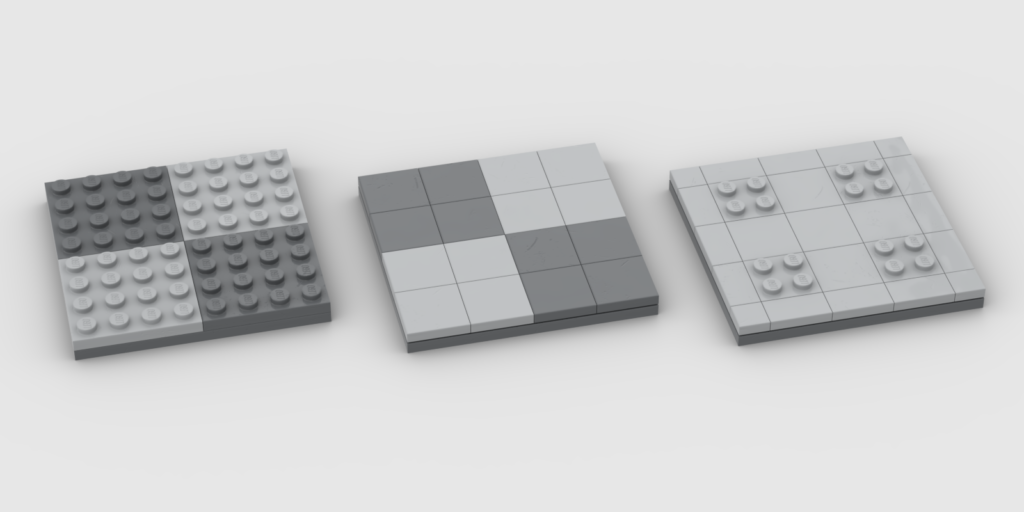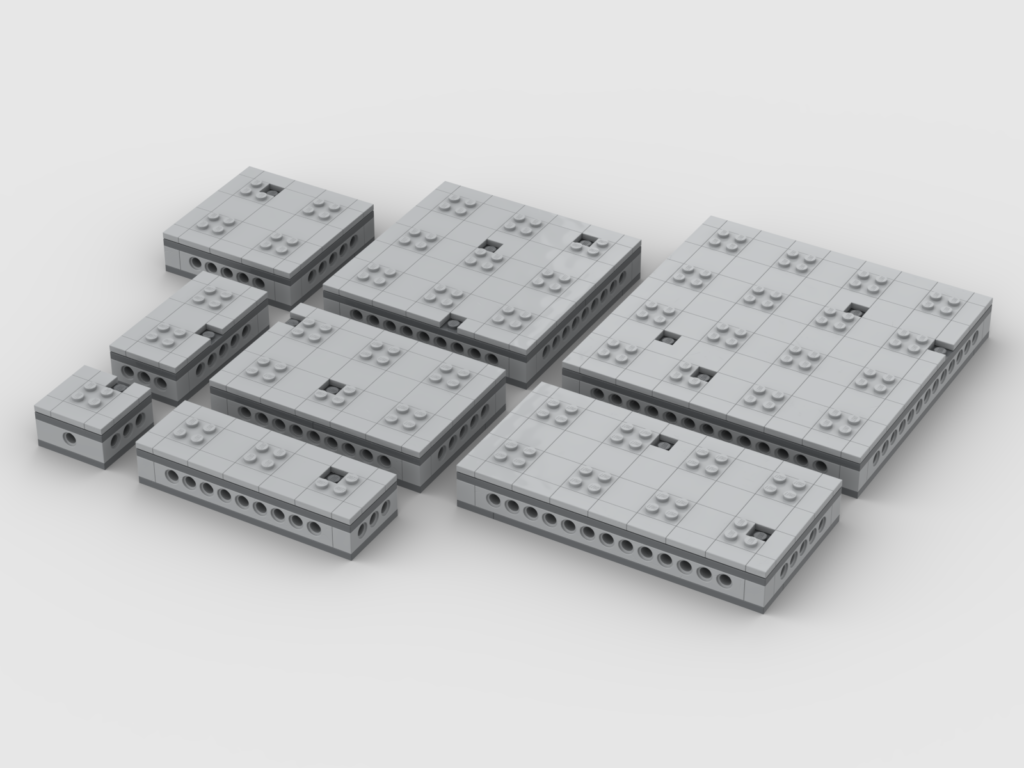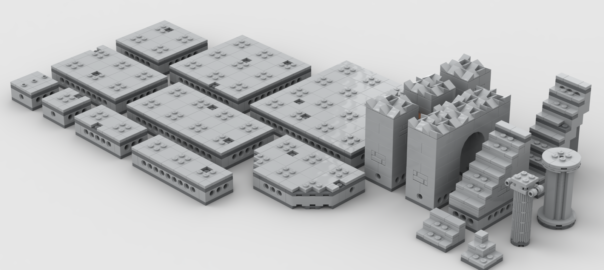The foundations of my system for using LEGO to play D&D are the tiles: a system of modular tiles to create maps. I’ve designed a system that is both aesthetic and functional.
A few years ago, I got it in my head to try playing D&D with LEGO. Miniatures are relatively easy, as there are so many minifigure options. The problem came with maps. How could I represent squares in a way that wouldn’t be tedious?
I settled on a scale where 4 studs would equal five feet. This works nicely for the rules and looks good with figs. It is also easier to build even numbers in LEGO, so three or five would have been way more work. The problem is how to differentiate the squares. I’ve seen some people use a checkerboard of plates, but the aesthetics of that are terrible. All those studs are a distraction and I’d like to have a cleaner color language.
Covering the map in tiles would solve the problem of texture, but then figs wouldn’t be stable. I could put the figs on bases, of course, like most traditional miniatures, but I would still be left with the problem of representing the grid. Lego doesn’t make a 4×4 tile, and even if they did, it would produce a unnaturally smooth and regular surface.

The compromise that I came to was exactly that, a compromise. Each 4×4 square would be defined by a 2×2 plate at its center. These four studs would give a convenient spot to secure minifigs and scenery and by tiling the space in between, the grid would be obvious for players.
By adding a bit of decay (by omitting some squares of tile and letting the darker base show through), the whole thing looks satisfyingly organic. In addition, the concept is flexible enough to represent a wide variety of surfaces using commonly available elements.
With the basic grid system designed, I gave thought to actually building the maps. Obviously it wouldn’t be very reasonable to imagine the game master building an entirely new multi-thousand element model every two weeks. Even if it were, players never go exactly where they are expected. The system would need to be flexible and modular.

The eponymous dungeons are the obvious starting point. A few thoughtfully sized rectangles can be arranged to form a wide variety of layouts. The set of rectangles that I chose were influenced by the dimensions of common LEGO plates. Each of these modules can be formed with either one or two plates, making them sturdy and simple to construct.
By incorporating a layer of technic bricks, the tiles can be connected together with technic pins. This also allows the map to be built as it is explored and the pins will hold everything together in the event of any errant dice or other projectiles.
With that, we have a very basic system for creating maps. Next time, I will talk about walls and doors!
Keep building and enjoy!
